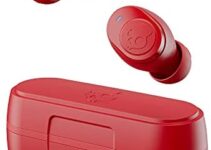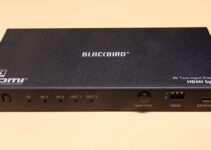Hi. My name is Cabel. And I’ve probably got the neatest job in the whole world.
I wear many hats. But here on my personal blog, I get to write about the things I really care about, just for you. And from the fact that you’re reading this blog at all, I think you may be a lot like me.
Well, get ready for this: I’ve been working on this post for over 10 years.
How can that be? It’s simple. For a decade, I’ve been snapping up copies of a certain gadget catalog, one by one, when they’re up for auction. Collecting and waiting.
The catalogs were disposable, and that means not many people kept them. But, to me, they tell a critically important story of the golden age of electronics, gadgets, copywriting, and sales.
They deserve to be preserved.
And I’m the guy to do it.
But, hang on — I’m getting ahead of myself.
What Was the DAK Catalog?
As a kid, I didn’t really read sci-fi novels, I’ve never read a single word of J.R.R. Tolkien, and I mostly used the encyclopedia to look up funny words.
What I did read as a kid, over and over again, were game/computer magazines… and the DAK Catalog.
(I know this says a lot about me. We don’t need to discuss it any further.)
Now, I’ve written about this particular catalog back in 2012, but back then I only scratched the surface.
To explain DAK, let’s both look at the Summer ’83 issue.

The cover’s hero image draws you in. What is that beautiful-looking tape deck? (And wow, even today, that thing is pretty awesome.)
Once you open it up, you’re greeted with a daisywheel printed just-for-you welcome message from a guy named Drew Alan Kaplan. That’s right, the D.A.K. himself.

Ok, you’re starting to get it now.
Here’s a catalog, from a guy who chooses cool gadgets, and writes about them in great detail, every word his own. Sounds fun.
And then, you dig in.
You see futuristic watches and wild telephones…




…a cool Atari 2600 cartridge-switching dingus…

…a hilariously sad/depressed battery charger, and more.

You might fantasize about owning one of these items. You might dream about how your life will change with it in your home. And you’ll be blown away by the price.
But really, it’s all because of the copy.
I bet you’ve never read anything quite like it. First, a strange, catchy, probably-confusing headline gets you in. Then, a single item is given an entire page of attention.
And most of all, the gadget is described and sold almost as if a friend is telling you all about it.
The photos. The copy. The gadgets. The pitch. There was so much to take in. That’s the DAK Catalog.
Memory Highlighter
I remember so many little feelings. I used to fantasize about carrying this weird computer around and in my non-existent kid briefcase, and replacing those little ROMs.


And I wanted this SK-1 keyboard so bad, I actually got it for Christmas one year! But from Santa, not DAK.

There’s lots of tech curiosities in here, too. For example, what on earth is this computer-less 3M plotter!?

And I’ve never seen this rad Canon all-in-one! It came with an external printer… and also an internal printer?!

Basically, this catalog was, and still is, my escape.
Anything To Close The Sale
Drew would always find unique ways to pitch. For years, and I mean literal years, he was harassing a radar detector company, goading them into a wager to prove that his cheaper radar detector was just as good as theirs:

As a kid, I was riveted by this challenge.
Seven years later, the challenge came to an end.


The conclusion was hidden in the page break:
“No, [DAK’s] Maxon didn’t win. No, we aren’t better than Passport and Escort. But, we didn’t lose either!”
Perfection! The DAK detector, you see, was given a “Best Value” award by their tester — that’s hardly a loss!
(Despite the not-loss loss, the next issue had a huge, comprehensive write-up of all of their radar-detector testing results, in perfect Drew-honesty style.)
Drew was also prone to pitching “mistakes”.


The general idea was that someone, somewhere, forgot a button or put in a wrong part, and thanks to their goof, you’re about to get the best deal of your life.
Frankly, I loved it all.
But First It Was Just Tapes
A few years back, a few very, very early DAK catalogs (and other early audio catalogs) showed up on eBay and, boy, you bet I grabbed them quick.
Together, they tell the (unseen-by-me) story of early DAK.
In 1972, DAK was just one thing: tapes.


Drew actually got his start by buying super high-quality, but used, reel-to-reel tapes from recording studios for $1. He’d erase them, and sell them to his college classmates for $2. Eventually the studios ran out of tapes to sell him, and he paired up with manufacturers.
In 1972, he was still selling tapes…


…but look, now we have the first appearance of the iconic DAK Gill Sans Ultra Bold headline font!
Then, in 1981, a new format appeared called Sound Ideas. This was an interesting hybrid of tapes… and gadgets! This is the missing link, a kind-of prototype DAK Catalog.


“This catalog takes you on a journey through the never never land of new electronic technology. We think you’ll find more exciting and innovative new products assembled within the 52 pages of this catalog than in any other catalog or store in the world.”

Finally, one year later, in 1982, the first (?) DAK Catalog launched, and the rest is history.
According to the Los Angeles Times in 1988, “Kaplan claims 2 million active customers, and Arnold Fishman, who runs Marketing Logistics, a direct-marketing services firm near Chicago, pegs DAK’s sales at $120 million last year and growing 20% a year. […] His friends estimate that Kaplan mails out more than 10 million catalogs.”
Innovator or Rip-Off?
But as I began to collect these DAK Catalogs, another catalog showed up in my search, and my whole world view was thrown into chaos.
I learned about a guy named Joseph Sugarman.

Joe was a copywriter. A pitchman. A one-man sales force. An unstoppable entrepreneur.
In the early-to-mid 70’s, Joe wrote and ran gadget print ads that he ran in Scientific American, like like this:


Eventually, Joe decided to put his ads together into a print catalog. At first, he called it “Our Space-age Product Catalog”

And to be honest, it all felt.. so familiar.

The headline. The section headers. The snappy copy. The almost-too-honest pitch. The closing price. You see it, right?
It was all there, seemingly long before DAK.
Then, in 1977, Joe upped his catalog game, and launched a brand new catalog: Products That Think.
Here’s how he introduced it to the world.

“In the next twelve months more microelectronic products will be introduced to the consumer than in any other phase of the micro-electronic revolution. How do you find out about these products? […] JS&A will produce its first major catalog listing the newest consumer micro-electronic products that we feel represent the best contributions to micro-electronic technology.”
The Products That Think catalog was really special.

The gadgets were unique, like this LED display ($395!).

And sometimes there were more photos than copy.

Joe’s writing could also be a little bit zippier than Drew’s. And he could be very, very funny.

“About the only redeeming feature of this product is that we don’t have huge quantities to sell. The importer is afraid to order too many for fear that nobody in their right mind would buy it, let alone sell it, so we only have a few hundred to offer as part of this test program.”
And it was beautiful. He would often use whole pages for full-bleed, incredible photos.
Just relax, scroll slowly, and soak these beauties in.













Reading these catalogs were a revelation for me.
And I’ll be honest with you: I was rattled.
You see, I had always assumed that Drew Alan Kaplan invented this genre. But now I wondered if DAK was inspired, a remix, and maybe Joe blazed this trail?
Now quickly obsessed, I picked up copies of three books Joe had written about copywriting: “Advertising Secrets of the Written Word”, “Marketing Secrets of a Mail Order Maverick” and “Television Secretes for Marketing Success”.


I inhaled these books. Although ocassionally dated, they contained a wealth of information, and served as a great breakdown for a style of copywriting I had only ever absorbed through reading the catalogs.
(Although his books are out-of-print, they seem to be available for Kindle! And a condensed version, “The Adweek Copywriting Handbook”, is available on Apple Books.)
Here’s some Joseph Sugarman trivia I learned:
- He claims to be the first person to ever accept credit cards over the phone, inventing an entirely new type of sales. Nobody else was crazy enough to shoulder the risk: with credit card processing done via the mail, it’d be months after shipping an item before he knew if the charge actually went through.
- Years later, Joseph created a product called BluBlocker®, which became a absolute smash hit that’s still available today. He sold BluBlocker® by creating what he says was the world’s first ever late-night informercial. (I can still perform the rap by heart.) More.
- Joe also once marketed a failed product called the Bone-Fone® and if you ever visit the Panic office, ask to try the Bone-Fone®. I will say no more at this time.
Cloned or Coincidence?
So, did DAK inspire Products That Think? And before that, did the JS&A ads inspire DAK? Or were both coincidentally born from the same pastel-colored 80’s miasma?
The answer was waiting in plain sight: an amazing interview Drew did with executive coach Jay Abraham back in 1998, right after the end of DAK. (Transcript.)
Drew: What happened [with DAK] was that an event changed my life.
Jay: What was the event?
Drew: The event was very simple. It was a man. Name’s Joe Sugarman.
Jay: I know Joe.
Drew: Probably the greatest copywriter, really the greatest promoter. And a great gentleman, real good friend of mine. I went to one of his seminars.
Jay: What did you get out of that seminar? You attended, what, four times?
Drew: I attended the seminar four times. I must be a slow learner. The first time was exciting; the second time was really great. But life’s experience helps a lot, because the first time, I hadn’t written that kind of advertising. The second time I had. By the third and fourth times, I was busy writing hundreds of ads, and each time, my enthusiasm would be raised to such fever levels. I came home ecstatic – ready to write.
I want you to know that Joe Sugarman’s seminars changed my life. And he changed the life of a lot of other people who attended his seminar. And I learned a lot. It was the seminal difference between normal writing… and what he unleashed with me was the ability to write ads like “Illegitimate Child for a Headset.” The “Can You Be Bribed?” ad, I wrote after that seminar.
And there you have it.
Drew didn’t invent this style, Joe did. But Drew took it, ran with it, and gave full credit for it.
The student became the master. And the master continued to be the master. And we all won. Or, at least, I did.
I have so many other questions, but it’s unlikely I’ll ever learn more.
Drew Alan Kaplan is… reclusive. The Los Angeles Times confirms this as far back as 1988:
Friends describe him as a loner who spends much of his time holed up in his $700,000, gadget-filled hillside home in Tarzana preparing his five or six catalogues a year.
“When he’s producing a catalogue, you can’t talk to him,” said one of his suppliers. “It can take 10 minutes to 10 months to get him on the phone.”
Kaplan, 41, rarely talks to the press and refuses to be photographed. “I’m not a publicity hound,” he said in a telephone interview, declining to be interviewed face-to-face. “No. Then you’d take a picture of me.”
I’ve still never found a single photo of him, even here in 2023. And I’ve never gotten an email reply from him either, other than a polite declination from a customer service rep. I dream of talking to him someday.
And Joseph Sugarman, although far more of a public figure and public speaker than Drew, didn’t reply to my occasional (probably too-eager) emails over the years either. And then, suddenly, quite sadly, I learned it was too late: Joseph passed away in March of 2022. You made a real impact on my life, Joe, without even knowing it.
Ok, Yeah, Also The Sharper Image
Before anyone asks, yeah fine I guess The Sharper Image was also doing this stuff in the early 80’s, but without the incredible copywriting verve. It’s just not the same!
But, as an added bonus, I’m throwing in four vintage The Sharper Image catalogs into this post, at no extra cost.
Click any cover to read or download the full issue.




The Beginning of the End
As the neon 80’s turned into the internet 90’s, DAK seemed to lose its footing.
Computers and IBM PC clones dominated our gadget imaginations. DAK rode the CD-ROM wave and rightfully sold its significance, but later catalogs soon became filled with music collections and software bundles.
And soon, it became clear there was trouble. In true DAK total-honesty form, it was front page news.

Running DAK is kind of like running an old family farm. First you borrow money from the bank to buy seeds. Then you work the land, and raise the crops.
Finally, you sell the crops, pay the bring you more exciting new products person who keeps his troubles to him-bank back and take care of your family.
Well at DAK, I borrow money to snap up bargains for you DAKonians. I write up all kinds of new products for the those special people who’ve reached out the ads, print the catalog and, then, you next couple of catalogs.
Finally, I pay off the bank, DAK grows each year and I take care of my family. It’s always worked great. Until now.
To hear Drew tell it, the issue was financial.
A weakening yen caused his sole Japanese lender, Tokai Bank, to pull their $18M line of credit in August 1992, and there was nowhere else to go. “I had never been able to find an American bank that liked the high volume/low margin business I had built”, Drew wrote on his website.
Worse, the bank owned the DAK trademark as collateral! So he couldn’t even be DAK anymore.
The Late Summer ’92 catalog letter continued:
This letter was really embarrassing for me to write. I’ve always been a private person who keeps his troubles to him-
self. Thankfully, I haven’t had to face this one alone. And, I’d like to thank those special people who’ve reached out in friendship.
Thank you, thank you. You DAK suppliers have been just wonderful. I couldn’t ask for a better group of friends.
In 1992, DAK filed for bankruptcy.
In 1994, it was gone.
Instant Immortality
It’s a fact. These catalogs deserve to live forever. I understand that I might be one of eight people on this planet who care. But they represent a lost art, with emphasis on the art.
And that’s why I’ve scanned every catalog I have.
Thanks to the help of my friend Kay Savetz, I now present to you over 55 (!) fully-scanned, 600 DPI DAK catalogs, stored safely on the Internet Archive for you to enjoy.
Best of all, there’s no charge for these downloads.
Plus, as a special added bonus, I’ve also included 9 very-rare Products That Think / JS&A catalogs, never before available on the internet.
Also provided totally free of charge.
I truly hope you enjoy them.
(yes, i continue to lose a lot of money on this blog. also thanks to my friend jason scott for helping to organize everything on the internet archive.)
My “Products That Think” Archive
Click any cover to read or download the full issue.









My “DAK Catalog” Archive
Click any cover to read or download the full issue.





















































Into The Future
It’s funny. Sometimes, things that seem so inconsequential and trivial when we’re growing up wind up shaping who we are in unexpected ways. Can you draw a straight line from the catalogs of my youth to my interest in making and selling things (like Playdate) today? I’d take that bet.
A friend of mine once remarked that the DAK catalogs, in some way, reminded them of TikTok videos, where people talk at length about products they love and why they love them. It’s just not written down and mailed to your house.
The gadget catalog may be no more, but our desire to share incredibly cool things with each other will never die.
Thank you for taking the time to read this very long post, and thank you for letting me share something I love.
Best,
Cabel
PS: Here’s a bonus DAK bread recipe book for you. If you make any of this bread please tell me.

PPS: If you’re one of the eight people who enjoyed this post, please tell your friends. We must find all of us
PPPS: Do you want one of these catalogs? You’re in luck!! I’ve put my extras on eBay. Now YOU can OWN one of these catalogs for as little as JUST $5 — by clicking here!
There’s nothing quite as relaxing and inspiring as flipping through these masterpieces, and this is a rare chance. Act fast and own a piece of gadget-catalog history.


